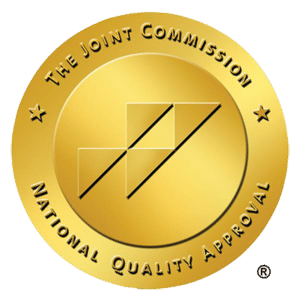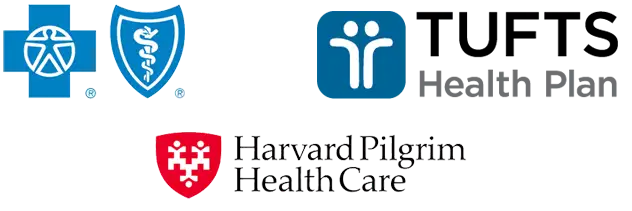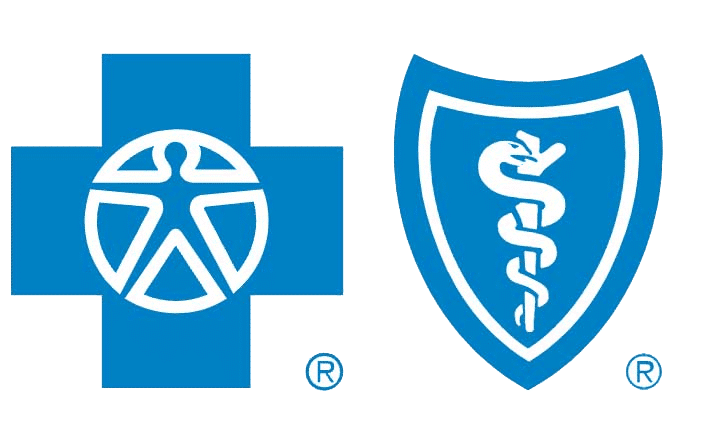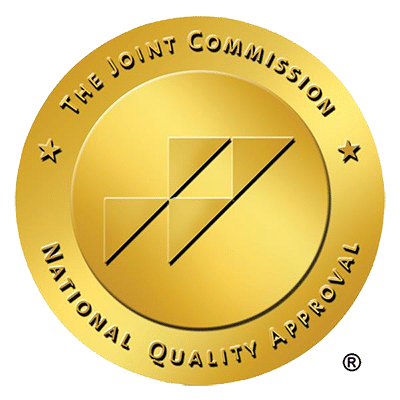What does crack addiction withdrawal really look like and how can you manage it? When confronting withdrawal, it’s crucial to grasp the intensity of symptoms, the varying timelines you might face, and the support strategies that can help. This article cuts straight to the core of these pressing concerns, offering clear, no-nonsense guidance for those battling the throes of withdrawal. While the path to recovery is deeply personal, the insights here provide a solid foundation for the journey.
Key Takeaways
- Crack cocaine withdrawal can produce a range of intense physical and psychological symptoms, requiring a tailored detox strategy and professional management.
- Withdrawal symptoms, including paranoia, hallucinations, anxiety, and fatigue, can start within 30 minutes to 72 hours following the last use and may last from 1 to 3 months.
- Successful recovery strategies include professional help, behavioral therapy, participation in support groups, and comprehensive treatment programs like those offered by Topsail.
Understanding Crack Addiction Withdrawal
Crack cocaine’s high potential for addiction makes the withdrawal process particularly challenging. When an individual decides to cease crack use, they are likely to experience a gamut of intense physical and psychological withdrawal symptoms. The discomfort and distress associated with these symptoms can often be overwhelming, adding to the already uphill battle against crack addiction.
Grasping the scientific principles behind these withdrawal symptoms equips individuals and their loved ones with critical insights into the withdrawal process. This knowledge heightens our appreciation of the situation’s complexity, enabling us to devise more effective strategies and manage symptoms more successfully.
Moreover, it’s worth mentioning that numerous factors can impact the severity of withdrawal symptoms, highlighting the necessity for an individualized approach to crack detox.
The Science Behind Withdrawal
Crack cocaine, an addictive drug, creates a potent feeling of euphoria by causing a buildup of the neurotransmitter dopamine in the brain, particularly affecting the limbic system, which is associated with pleasure and motivation. Long-term effects of cocaine use include the buildup of the genetic transcription factor ΔFosB in the limbic system, which may lead to lasting changes in nerve cell structure. These changes, along with altered gene expression in the brain, play a significant role in the transition from drug abuse to addiction.
The brain undergoes several changes during cocaine addiction. These changes include:
- The nucleus accumbens, a part of the limbic system, reinforces the desire to repeat drug-taking behavior by producing feelings of pleasure and satisfaction from cocaine use.
- The memory centers in the brain, like the hippocampus and amygdala, encode memories associated with the intense pleasure of cocaine highs, which can later trigger cravings and make relapse more likely.
- The frontal cortex, which helps with decision-making and impulse control, becomes impaired in addiction, leading to a decreased ability to resist urges to take cocaine.
- These structural and functional changes in the brain pave the way for the uncomfortable withdrawal symptoms experienced during cocaine abuse detox.
Factors Influencing Withdrawal Severity
The severity of crack cocaine withdrawal symptoms can be influenced by multiple factors. For example, an individual’s metabolism, which determines the speed at which the substance is processed and expelled from the body, is one such factor. An individual’s overall health condition can also significantly influence the withdrawal process, potentially exacerbating symptoms.
Mental illness is another critical factor that can compound the intensity and duration of withdrawal symptoms. For instance, individuals with pre-existing mental health conditions may find their symptoms exacerbated during withdrawal, adding another layer of complexity to the crack detox process. This underlines the significance of a comprehensive and customized approach to withdrawal management, considering all these contributing factors.
Common Symptoms of Crack Withdrawal
The withdrawal symptoms from crack cocaine are notoriously intense, primarily due to the drug’s high potency. Although these symptoms can be intense, they typically don’t pose a threat to life. Nevertheless, the psychological side effects of withdrawal can be perilous, as individuals may experience:
- Severe depression
- Anxiety
- Irritability
- Fatigue
- Difficulty concentrating
- Insomnia
- Increased appetite
- Intense cravings
It is important to seek professional help and support when going through crack cocaine withdrawal, rather than attempting to quit cold turkey.
During crack withdrawal, self-care is of utmost importance and may entail medical supervision and the use of medications to alleviate symptoms like anxiety, insomnia, and restlessness. Understanding these symptoms and their implications can go a long way in managing them effectively, which brings us to the two broad categories of symptoms: physical and psychological.
Physical Symptoms
Physical symptoms of crack withdrawal may include:
- Nerve pain
- Muscle aches
- Difficulty breathing
- Severe fatigue
- Body aches
- Hallucinations
These symptoms are most apparent in the initial days of withdrawal.
The timeline of these physical symptoms is also noteworthy, typically lasting from 1 to 3 months. This prolonged timeframe emphasizes the need for sustained support and management.
Persistent smoking of crack cocaine can inflict severe damage to the lungs, leading to respiratory issues like difficulty breathing and chronic chest pain. These physical symptoms underline the necessity of a structured and medically supervised crack detox strategy.
Psychological Symptoms
Psychological disturbances often accompany the physical symptoms of crack withdrawal. During the acute phase of withdrawal, individuals may experience anxiety, exhaustion, unpleasant dreams, and difficulty concentrating. Post-acute withdrawal can include depression, anxiety, difficulty sleeping, lack of motivation, and cravings, with such symptoms potentially being classified as protracted withdrawal if they last beyond three weeks.
These psychological symptoms can profoundly affect an individual’s mental health, sometimes necessitating the administration of controlled doses of antidepressants or anti-anxiety medications for control. It’s also worth noting that intense cravings and drug dreams may persist for 6 months or longer following cessation of crack cocaine use, further underscoring the need for long-term support and management.
Crack Withdrawal Timeline: What to Expect
Equipped with a rudimentary understanding of the symptoms of crack withdrawal, let’s delve into the usual timeline of withdrawal. Symptoms typically begin 30 minutes to 72 hours after the last use of crack cocaine, marking the start of an intense journey towards recovery.
Withdrawal symptoms typically last several days to 3 to 4 weeks, with short-term symptoms usually stopping after several days. In the second week of withdrawal, people may have intense cravings for crack cocaine and continue to struggle with depression. These symptoms can be very challenging to manage. By the third and fourth weeks, cravings may reduce, but depression, anxiety, and mood swings may still be present.
Acute Phase
The acute phase of withdrawal is the initial 24 to 72 hours after ceasing crack use. During this phase, individuals may exhibit symptoms such as:
- paranoia
- body aches
- hallucinations
- severe fatigue
- intense cravings
Severe fatigue and irritability, both uncomfortable symptoms, are also common during this phase.
The acute phase can pose a considerable challenge due to the abrupt emergence of symptoms and their intensity. Paranoia and extreme mood changes can occur, with symptoms like anger and emotional outbursts requiring vigilance as they could lead to relapse. This phase underscores the need for medical supervision and a robust support system to mitigate the risk of relapse.
Protracted Withdrawal
Beyond the acute phase, individuals may experience what is known as protracted withdrawal. This phase is characterized by ongoing symptoms such as:
- anxiety
- agitation
- depression
- an inability to feel pleasure
Symptoms persisting beyond three weeks after stopping crack cocaine are classified as protracted or post-acute withdrawal symptoms (PAWS).
This phase can be a steep uphill battle, and at times, the end may seem out of sight. However, with a strong support system and professional help, individuals can navigate through this challenging phase and significantly improve their chances of a successful recovery.
Want to Learn More about Crack Addiction?
Our addiction recovery team is here 24/7 to answer your questions or to get you help.
Strategies for Coping with Crack Withdrawal
Even though the withdrawal process can be daunting, there exist effective strategies to handle it. Being aware of the false sense of recovery during the initial week of withdrawal and maintaining vigilance can mitigate the risk of relapse. Detoxing in a drug treatment facility with a robust support system is key to coping with challenging days and future cravings.
Adherence to professional recommendations, like considering inpatient or outpatient rehab, is crucial for preventing relapse during withdrawal. Behavioral interventions like Contingency Management and Cognitive Behavioral Therapy have also proven to be effective in the treatment of crack cocaine addiction.
Lastly, engagement in peer support groups has shown to assist in maintaining abstinence and enhance treatment satisfaction.
Self-Care and Lifestyle Changes
Self-determination is a vital component in recovering from crack addiction. It fosters a sense of personal responsibility and commitment to sobriety, which is fundamental in navigating the challenging journey of withdrawal. Proactive steps towards recovery, such as:
- Engaging with peer support groups
- Seeking professional help
- Participating in therapy or counseling
- Developing a strong support network
- Practicing self-care and healthy coping mechanisms
Support groups and therapy sessions are recognized as having a positive impact on overcoming substance abuse, including those who abuse alcohol.
These self-care and lifestyle modifications extend beyond merely managing withdrawal symptoms. They also involve creating a new life where it’s easier not to use. It’s about making a long-term commitment to health, wellness, and a drug-free lifestyle.
Support Networks and Professional Help
Establishing robust relationships and support networks is a fundamental aspect of the recovery process from crack addiction. Support networks, including those developed in drug treatment facilities, play a crucial role in assisting individuals through the recovery process. Participation in peer support groups has been linked with improvements in:
- Negative affect
- Habitual craving
- Self-efficacy
- Reducing feelings of guilt or shame
In a detox, professionals can provide careful management of withdrawal symptoms in a supportive environment. This ensures that individuals obtain the necessary support during this challenging period. The medical supervision phase of crack cocaine detox can last up to a month, ensuring the safety and effectiveness of the treatment. Incomplete or rushed detox treatments could greatly increase the risk of relapse, hence, professional oversight is essential.
Sober living homes provide a controlled, substance-free environment to support individuals in recovery and help prevent relapse. Family and friends are also advised to minimize environmental stressors and demonstrate patience to support someone undergoing crack withdrawal.

Topsail’s Comprehensive Approach to Crack Addiction Recovery
At Topsail, we extend comprehensive crack addiction treatment programs in MA, meticulously designed to offer personalized support and effective solutions to individuals striving to liberate themselves from alcohol and drug dependencies. Our range of evidence-based addiction treatment options cater to unique individual needs, incorporating a Full Day Program (PHP), a Half Day Program (IOP), and an Outpatient Program (OP). Our professionals are dedicated to facilitating a personalized recovery journey and are experienced in delivering high-quality care.
Our state-of-the-art facilities are strategically located in North Andover, Massachusetts, enhancing the therapeutic environment for recovery.
Full Day Program (PHP)
The Full Day Program at Topsail, also known as the Partial Hospitalization Program (PHP), is offered five days a week in North Andover, MA. This program delivers intensive addiction treatment, providing a comprehensive and structured approach for those grappling with substance abuse.
Half Day Program (IOP)
The Half Day Program at Topsail is an Intensive Outpatient Program (IOP) aimed at individuals with substance abuse and addiction issues. This program meets three times a week for sessions that are 3-4 hours each, providing a consistent schedule that fits into most people’s lives.
To accommodate various lifestyles and responsibilities, the program offers programming in the evenings and the option for participants to engage through telehealth services. The design of the Half Day Program focuses on aiding participants in reintegration into their daily lives while maintaining a dedicated pathway to recovery.
Outpatient Program (OP)
The Outpatient Program (OP) at Topsail offers customized addiction rehab treatment plans that fit your schedule, with sessions running once a week for approximately an hour. Whether you’re transitioning from a higher level of care or require a less intensive level of treatment, our Outpatient Program is designed to provide the ongoing support you need as you navigate your recovery journey.
Crack addiction withdrawal is a challenging journey, fraught with intense physical and psychological symptoms. However, with understanding, vigilance, and a robust support system, it is a journey that can be navigated successfully. At Topsail, we provide comprehensive, personalized treatment programs designed to facilitate recovery and prevent relapse. Our dedicated professionals, state-of-the-art facilities, and range of treatment options provide the critical support necessary to navigate the turbulent waters of crack withdrawal and chart a course towards a healthier, drug-free future.
Related Posts

Your Comprehensive Guide on How to Stop Fentanyl Addiction
Wondering how to stop fentanyl addiction? You’re not alone. Fentanyl is a highly addictive opioid, and breaking free requires clear, actionable steps and resilient support.

The Stages of Crack Addiction: Understanding the Progression
Are you trying to understand the stages of crack addiction? This article outlines the progression from initial experimentation to the devastating impact of full-blown addiction.

The Signs of Crack Addiction: Key Symptoms to Watch For
Spotting the signs of crack addiction early can be lifesaving. Rapid weight loss, behavioral shifts, and psychological disturbances are warning signals. This guide directly addresses

How to Treat Marijuana Addiction Effectively: Beat The Habit
Seeking how to treat marijuana addiction? This straightforward guide outlines step-by-step methods to break free from marijuana’s grip. Simplifying the science, we address the core

A Step-by-Step Guide on How to Overcome Crack Addiction
Navigating the turbulent waters of crack addiction recovery may seem daunting, but you’re not alone. In learning how to overcome crack addiction, knowing what to

Critical Signs of Meth Addiction: Symptoms & Support Options
Wondering what are the warning signs of meth addiction? Early detection can be lifesaving. From drastic behavioral swings to ‘meth mouth,’ these symptoms are alarming















